Charles Darwin was very intelligent, thoughtful, and hardworking. And a big worrier.
One thing he worried about was how people would respond to his theory of evolution by natural selection. He knew people would fuss about it. They would say he was wrong, stupid, and bad. He worried that a whole lot of people could be a whole lot of angry. Perhaps he sensed that bumper stickers might ensue.
The idea first really came to him in 1838 when he read Malthus on population. He worked on it for decades, always worried that he wasn’t ready for publication. Instead he published about the voyage of the Beagle, about collections he’d made on that voyage, about geology, about coral reefs, and more. Plus he had a life.
Decades went by, and it always seemed there was more research to be done on natural selection before he could proceed. He wanted all his ducks in a row. (No, more ducks. Straighter row. Bigger ducks. They need to be… duckier.) He only showed bits of his work to a few reliable friends, like geologist Charles Lyell and botanist Joseph Dalton Hooker. They said he should publish. He worried he didn’t have enough yet. He complained to Lyell, “every proposition requires such an array of facts.”
Because of his other work, Darwin was highly regarded. People wrote to him and sent him specimens. One of the people who wrote to him was Alfred Russell Wallace, who was off in the Malay Archipelago, botanizing and biologizing and biogeographizing. Wallace sent Darwin bird specimens, and a paper he’d written about the “Sarawak Law.” Passing on a compliment, Darwin told Wallace that Lyell had liked another paper of Wallace’s.
In June 1858, Darwin got a letter from Wallace which filled him with despair. It included the manuscript of an essay which Wallace asked Darwin to look at and send to Lyell. In relatively few words it described the theory of evolution by natural selection.
AUGH!
Darwin miserably sent it to Lyell, saying “Your words have come true with a vengeance that I should be forestalled” [if he didn’t publish]. …all my originality… will be smashed.”
Lyell consulted Hooker and the two famously came up with a plan to present Wallace’s and Darwin’s work jointly at a meeting of the Linnean Society. They published Wallace’s essay along with extracts from an essay Darwin had written but not published in 1844. Darwin worried about whether it was the honorable thing to do, but they talked Darwin into it. One of his children was dying, and he couldn’t pay much attention to anything else. Wallace, far in the Malay Archipelago, was not consulted.
Hooker wrote Wallace a letter, explaining the whole thing. Darwin sent it to Wallace, along with a letter of his own. It took four months for the letters to get to Wallace.
It is a melancholy thing for students of tact, and for busybodies, that these letters do not survive. Darwin told Hooker his letter was “perfect, quite clear & most courteous.” Was there any apology? Probably not, but we don’t know. Whatever they wrote, Wallace took it well. His letter to Darwin is also lost, though his letter to Hooker exists. He said he was gratified, found their procedure “strictly just” and that he felt favored to have his work recognized with Darwin’s, and that he would have hated it if Darwin had in an “excess of generosity” published Wallace’s essay without his own.
Wallace and Darwin resumed corresponding about honeycomb structure, birds’ nests, and stripes in horses and donkeys. Wallace wrote to his mother and to a naturalist friend, gloating over his publication and the nice things Lyell and Hooker had said about his work.
Hooker and Lyell now insisted that Darwin finish and publish his book on natural selection, even if his ducks were unruly. It came out at the end of 1859.
In the resultant furore, a few others popped up to say Hey! I thought of that ages ago! What’s the big dealie-hoo? Do I get a prize?
Patrick Matthew, a naturalist and political writer, made a public fuss about the fact that he had published a description of natural selection way back in 1831. He wrote indignantly to the Gardeners’ Chronicle claiming he had been first.
It was true.
Darwin replied via the Gardeners’ Chronicle:
I freely acknowledge that Mr. Matthew has anticipated by many years the explanation which I have offered of the origin of species, under the name of natural selection. I think that no one will feel surprised that neither I, nor apparently any other naturalist, has heard of Mr. Matthew’s views, considering how briefly they are given, and that they appeared in the Appendix to a work on Naval Timber and Arboriculture. I can do no more than offer my apologies to Mr. Matthew for my entire ignorance of his publication. If another edition of my work is called for, I will insert a notice to the foregoing effect.
As Stephen Jay Gould described, Matthew wrote back that he hadn’t promoted his idea more because it seemed so obvious. Poor plodding Darwin had to puzzle it out, duck by duck, “while with me it was by a general glance at the scheme of Nature that I estimated this select production of species as an a priori recognizable fact—an axiom, requiring only to be pointed out to be admitted by unprejudiced minds of sufficient grasp.”
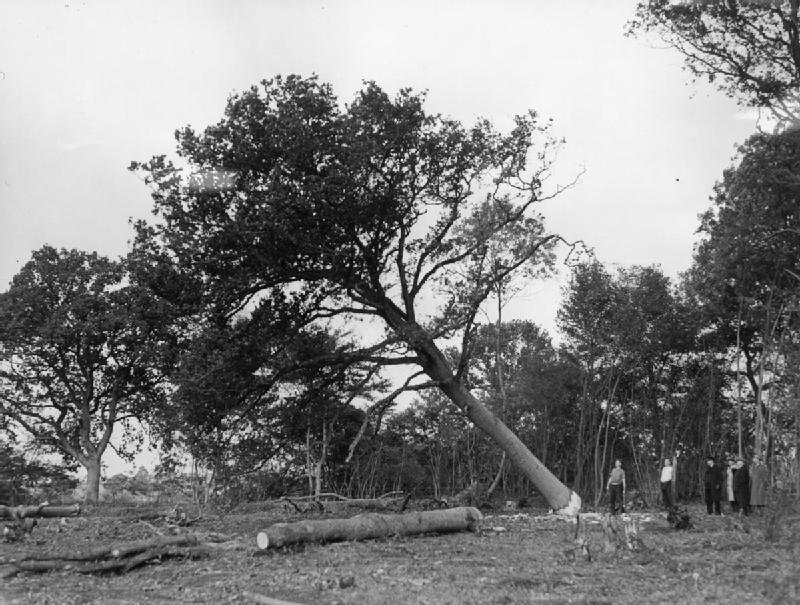
I couldn’t find a picture of Patrick Matthew, so here is some naval timber. Cutting down an oak to build minesweepers, Second World War.
(Tell me about it. I thought plate tectonics was so obvious I never bothered to bring it up. I mean, look at South America and Africa, duh. I was a child of seven, so of course I never published. I did tell Amy.)
Matthew had the words “Discoverer of the Principle of Natural Selection” put on the title page of a revised edition of Naval Timber and Arboriculture. (Naval timber is wood suitable for shipbuilding.)
Biographer Janet Browne notes that a doctor turned out to have written an essay outlining natural selection in 1818, and to have buried it in a larger work called Essay on Dew. (Dew! Damn! Dew! Why didn’t I think of that?)
Darwin’s apology to Matthew is good. He acknowledges Matthew’s priority, gives a believable explanation of why he hadn’t heard of it, and offers to make amends in future editions. (Which he did.) Okay, the part about how absolutely nobody read the goddamned appendix, of all things, to a goddamned book on – excuse me? – naval timber does seem like a dig. But it’s true.
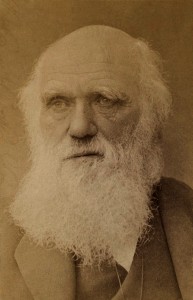
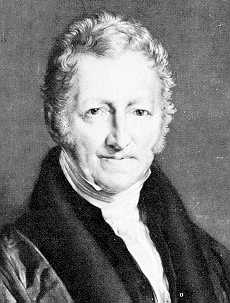

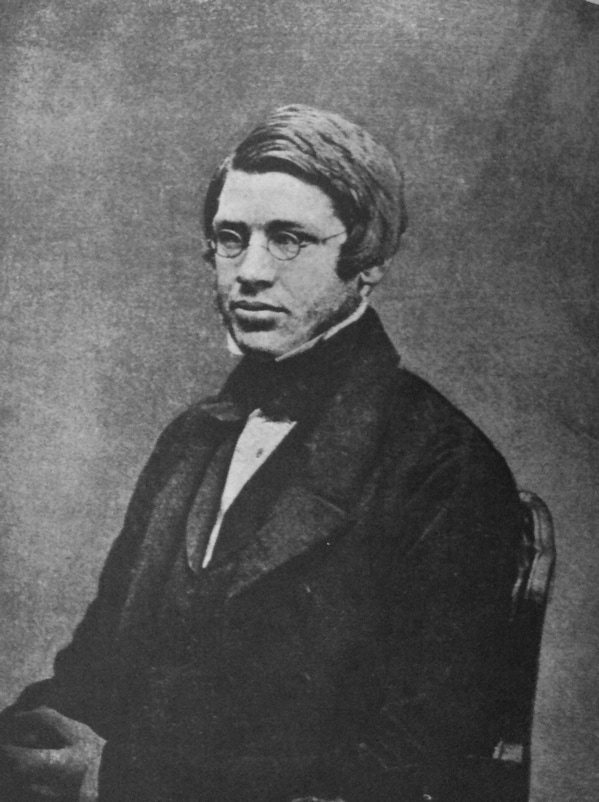
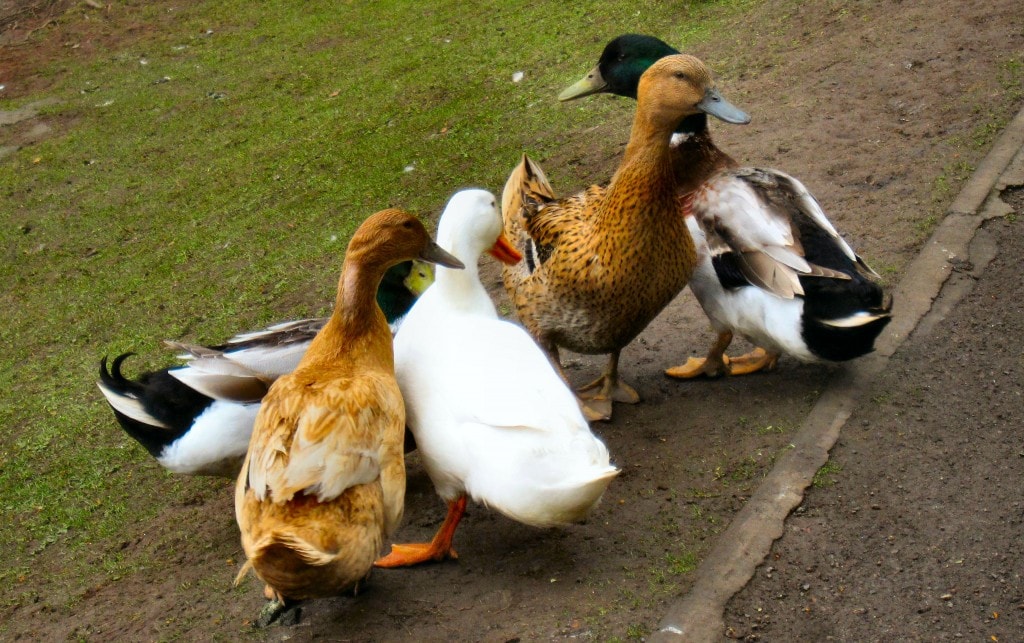


Love this! I love how polite and thoughtful these great Victorian scientists were to each other, that Darwin would be genuinely distressed to think that Wallace might think ill of him, and Wallace the same about Darwin. We find precious little of such politesse around today.
Yes, I agree, the collegiality of the entire set of exchanges is admirable, and an extinct species of social phenomenon now.
Also, even though I mentioned it only to close friends at the time and didn’t publish, plate tectonics, at least in its broad outline, was evident to me at the age of only *six*; so there !!
You did? Then I freely acknowledge that Mr. Turoff anticipated by a full year the explanation which I have offered of the movement of continents, under the name of “obviously.” I offer my apologies.